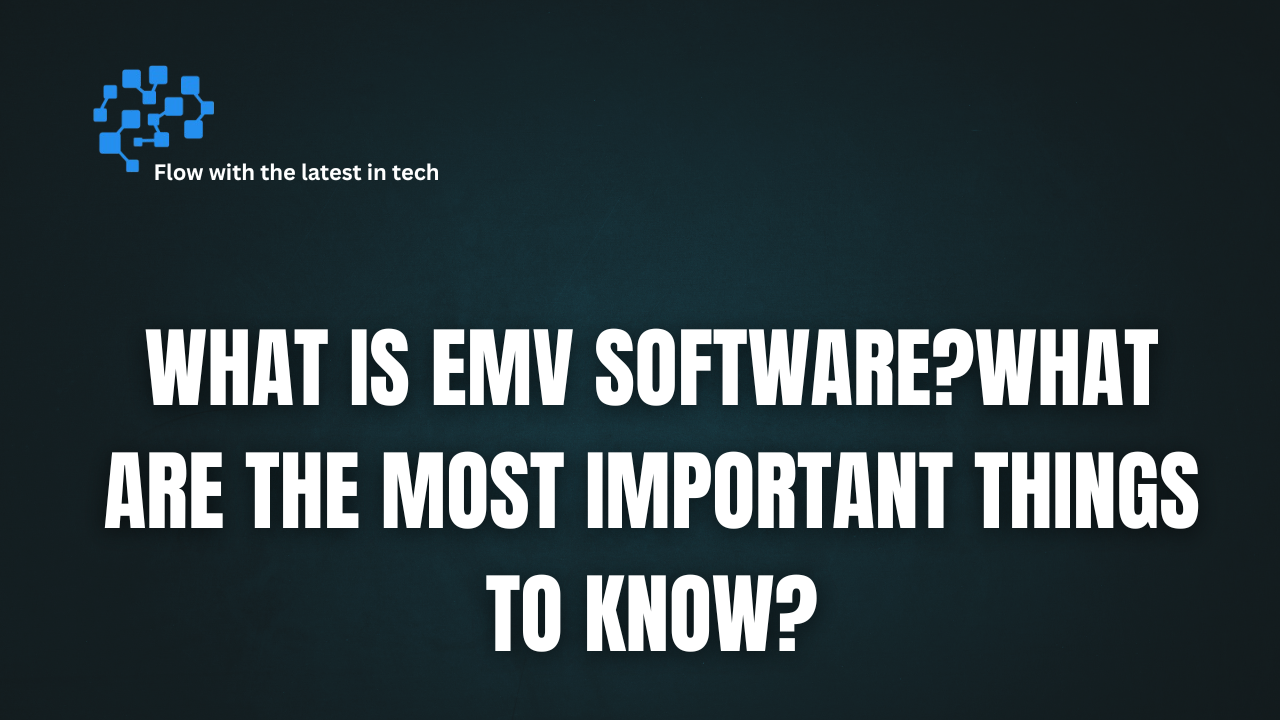Table of Contents
Beginning
Digital payments are now the most important part of the world economy. Secure transaction systems keep your private financial information safe whether you’re paying at a restaurant, swiping your card at a store, or buying anything online. EMV software is one of the most essential new things in this field. The three firms that first came up with this payment standard were Europay, Mastercard, and Visa. It is currently a global standard for safe card payments, with billions of transactions happening every day.
The job of EMV software is simple but important: it lets payment terminals, ATMs, and point-of-sale systems talk to EMV chips on debit and credit cards. Instead of using old magnetic stripes, EMV software makes it possible to transmit data in real time, which makes card fraud much harder.
This blog talks about what EMV software is, why it’s important, how it works, its benefits and cons, and the most important things organizations should think about. It ends with a clear conclusion about how important it is in the world of digital payments.
What is EMV software?
Chip-based payment transactions are powered by EMV software. It lets payment terminals read cards with chips in them and make safe transactions with banks or card issuers. EMV produces a unique transaction code for each purchase, unlike magnetic stripe technology, which uses static card data.
In simple words, EMV software connects your chip card to the banking network. Your card’s microprocessor chip wouldn’t be able to verify the transaction without it.
Some important things with EMV software are:
Chip card authentication checks, to see if the card is real.
Cardholder verification: checks the identity of the individual using the card using a PIN, a signature, or a contactless technique.
Transaction authorization: Asks the card issuer for permission.
Data encryption: Protects private financial data while it is being sent.
Why EMV Software Is Important
Fraudsters are always trying to break into the worldwide payment system. It was easy to clone old magnetic stripe cards, which cost the world billions of dollars. To fix this problem, EMV technology was created.
There are a few important things about EMV software that make it important:
Less Fraud
Dynamic authentication data makes EMV transactions far safer than magnetic stripe transactions. The data can’t be utilized again, even if a hacker gets into the transaction.
Following the rules
Many nations have made EMV required for banks, merchants, and payment processors. Businesses could face fines and other penalties if they don’t have EMV capabilities.
Trust from Customers
People are more likely, to trust firms that have EMV-enabled terminals.Customers feel more confident when payments are safe.
Payments that are ready for the future
Not only does EMV technology work with chip cards, but it also works with contactless payments, mobile wallets, and NFC-based payments. This makes it a base for new ideas in the future.
How EMV Software Works
An EMV transaction could seem complicated, however it can be broken down into simple steps:
Putting in a card or tapping it
The person with the card puts their EMV card into a chip reader or touches it on a terminal that doesn’t need a contact.
Verifying the Card
The terminal talks to the chip on the card. By validating the card’s cryptographic keys, EMV software makes sure that the card is real.
Checking the Cardholder
Depending on the system the consumer may need to enter a PIN sign their name or only tap the card if the amount is less than the contactless limit.
Processing Transactions
The terminal makes a transaction code that is different for each one. The bank or card issuer gets this code and approves it.
Response to Authorization
The card issuer checks to see if the transaction is valid and sends the answer back to the terminal.
Done
The purchase is either accepted or turned down. The merchant gets confirmation if the payment is approved.
With the old system, the same card data was used for every purchase. EMV software makes sure that every transaction is unique, safe, and verified.
Benefits of EMV Software
Using EMV software has a lot of benefits for both businesses and customers:
Better Security
Dynamic authentication codes stop attacks that clone cards and skim them.
Less Risk of Fraud
In a lot of nations, merchants who don’t support EMV are responsible for fraudulent transactions. This risk is lower when you use EMV software.
Standardization around the world
EMV is used all over the world. This makes it safer and easier to do business across borders.
Lets you pay without touching anything
EMV systems that are up-to-date work with NFC and mobile wallets, so they are ready for the future.
Increases Trust in Consumers
Customers, are more likely, to return to stores that use secure payment systems which can boost loyalty and repeat business.
Following the Rules
Businesses stay in line with many financial rules by using EMV, which is required by many of them.
Disadvantages of EMV Software
Like all technologies, EMV software has some problems:
Costs of Implementation
Small businesses may have to spend a lot of money to upgrade to terminals that support EMV.
More time for transactions
Transactions with chip cards, usually take a few seconds longer than those with magnetic stripes.This can make clients, who are in a hurry angry.
What You Need to Know About Training
Staff needs to learn how to operate and fix EMV systems.
Not 100% Safe
EMV makes card present fraud less likely but it doesn’t stop online card not present fraud.Criminals can still use stolen card information to buy, things online.
Difficult Integration
Older point-of-sale systems may have trouble working with EMV software when businesses want to add it.
Things to Think About Before Using EMV Software
If you own a business or work for a payment service provider, there are a few important things to think about while making your choice:
Cost of putting into action
Think about how much it will cost to upgrade terminals, buy software licenses, and train employees. Weigh this against the savings you’ll get in the long run from having less fraud liability.
Experience of the customer
To keep transactions quick and easy, look for EMV solutions that work with both chip and contactless payments.
Ability to grow
Pick EMV software that can grow with your organization, handle more transactions, and work with new technologies.
Requirements from the government
Check that your EMV system follows both local legislation and international standards.
Working with current systems
Make sure the software works with your POS online store and accounting systems.
Reliability of the vendor
Work with vendors you can trust who offer good customer service, regular updates, and strong security measures.
Features for Security
In addition to EMV look for extra security features like tokenization end to end encryption and fraud detection analytics.
In conclusion
Payments are changing quickly, and EMV software is a big part of this change. EMV has made card fraud much harder and transactions more safer by replacing static magnetic stripe data with dynamic, chip-based authentication.
Businesses don’t just embrace EMV to follow the rules. It’s about keeping customers safe, lowering risk, and getting ready for the future of digital payments. The initial costs and technical problems can be problems, but the long-term advantages are much greater than the problems.
For customers, EMV technology gives them peace of mind. Advanced encryption, fraud protection, and worldwide acceptance are all benefits you get every time you insert or tap your card.
To put it simply, EMV software is more than just a way to pay. It is the basis for safe transactions today. In a world that is becoming more and more digital, businesses who use it will not only secure themselves, but they will also develop deeper trust with their customers.

